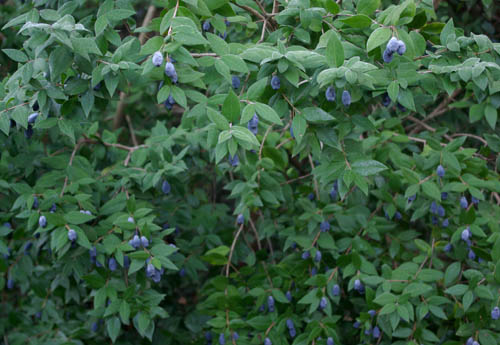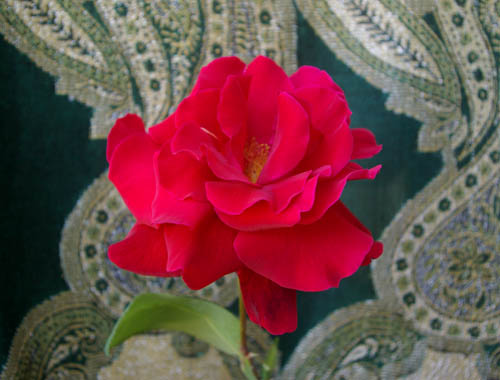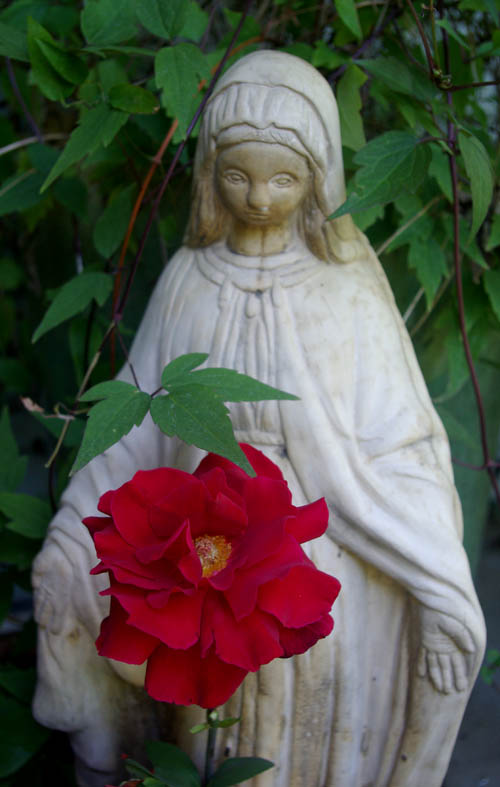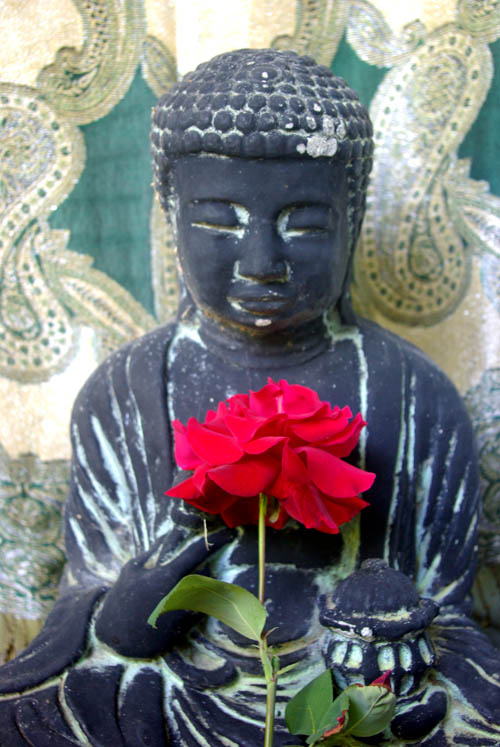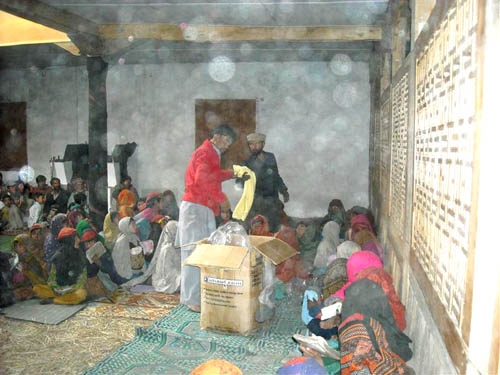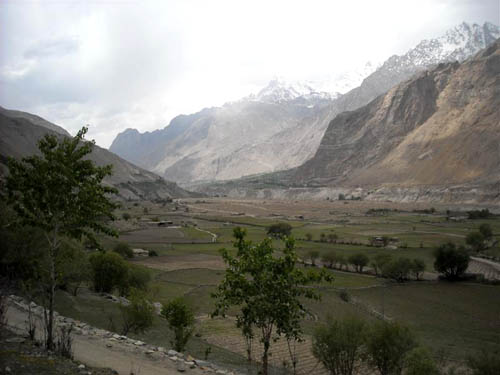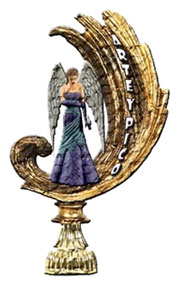Last winter, strangely, there appeared many dark bluish purple berries on a very large shrub rather lost in a foresty section of the garden, that I must confess, I had not fully researched to identify. The berries were very enticing that particular morning as they were encased in the ever so slightest of moisture, appearing to be glazed. They were enchanting and I ran for my camera to capture them. So glad I did.
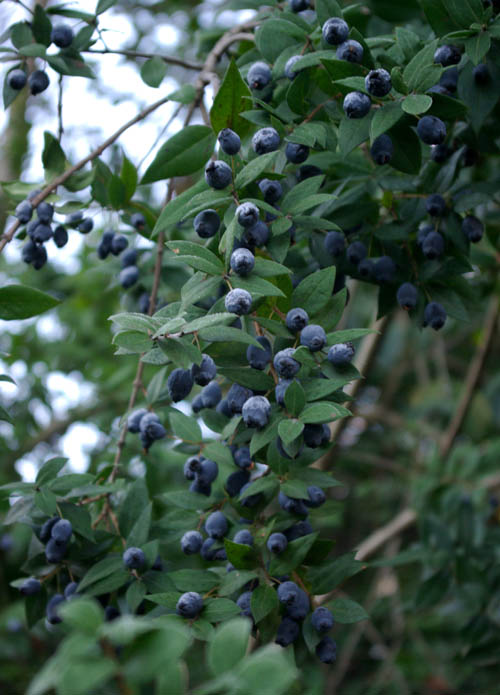
I wondered about these berries, then, for a few days. Quite honestly I wanted to eat them, but I didn’t know what they were, so knew that was definitely not an option. And I simply did not take the time to snap off a branch and take them to a local nursery in hopes of someone telling me what they might be. In part this was due to suspecting they were planted many decades ago by a woman, I learned not long after moving into this home nearly four years ago, who had served as president of the local gardening club. (To her I owe much of my mature garden.) So I suppose I suspected this particular plant might be something not so easily recognized in the modern world, particularly as I could not recall ever seeing it before. Part of my reluctance was also fueled by not having seen a single bird eating those lovely berries in those early days of their emergence, so assumed they must be decorative, lessening my interest. You can imagine my surprise when I went out into the garden one morning shortly after and found not a single berry on the shrub. So someone liked them. I’m guessing robins who infrequently, but regularly swoop through like clockwork when there is something yummy on their radar. And then they disappear for months. So fascinating. And that’s how that went down.
Now here it is early summer and the shrub is fully in gorgeous flower and finally is fully within my own curiosity sites. How could it not?
Yesterday I took the initiative to snap off that branch at last, wrap it in a wet paper towel and rush it off to John, everyone’s favorite nurseryman, and asked his opinion. He scratched his head and muttered something in Latin and fortunately I caught the first part: myrtle. Google helped with the rest, and Myrtle communis is what I have to be thankful for. Lucky me. Intrigued and now fully engaged I set to work to learn all I could about true myrtle.
First, I can, indeed, eat them, though apparently jam would be a higher option. Interestingly I can dry the berries and use them as a substitute for pepper, which I might explore, as I do not use black pepper in my kitchen ever, though I do use cayenne. (The body likes it better.) The leaves, I learned, have sometimes been used as a substitute for bay. Good to know, though a bay laurel is just outside the front door. But duly noted.

True myrtle is repeatedly referred to as a very old plant. It’s been with civilization for a very long time and is many times referred to in the Bible. It is most commonly associated with the Mediterranean region. In Greek mythology true myrtle is ascribed to have been sacred to Aphrodite, and, indeed, as Venus emerges from the sea, she is said to have hidden herself among the myrtle trees. In Rome Virgil states, “the poplar is most dear to Alcides, the vine to Bacchus, the myrtle to lovely Venus.” This was extended to the practice of women carrying myrtle in their bridal bouquets or of weaving wreathes of myrtle, worn in their wedding rituals. Frequent readers will not be surprised at all that this bit of information completely captured my imagination and I resolved immediately to make a wreath this morning, which I did, and enlisted the support of my very beautiful daughter to share the lovely result with all of you.

Indeed, it was Antonia who noticed immediately how beautifully fragrant the myrtle was when I gathered some yesterday morning and coupled with some pink hydrangea for a breakfast bouquet. It has a deeply spicey perfume emanating that is very rich and attractive. I do hope you will find some in your environs to enjoy. I also would encourage you to grow it, particularly for those of you who are water conscious as it proves to be not a fussy plant, and needing very little water, undoubtedly contributing to its longevity and easy survival. The one in my garden has been given free reign for a long time so it has become very large, indeed. Here you see just how much it has expanded over time. Conner wanted to be included in the frame. Enjoy.
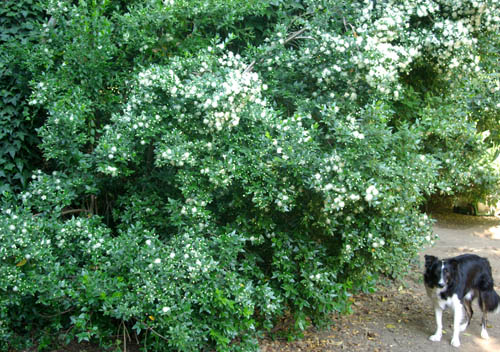
Love and many gardening blessings,
Kathryn xoxo
Posted on June 27th, 2009 by Kathryn
Filed under: Plants | 33 Comments »

